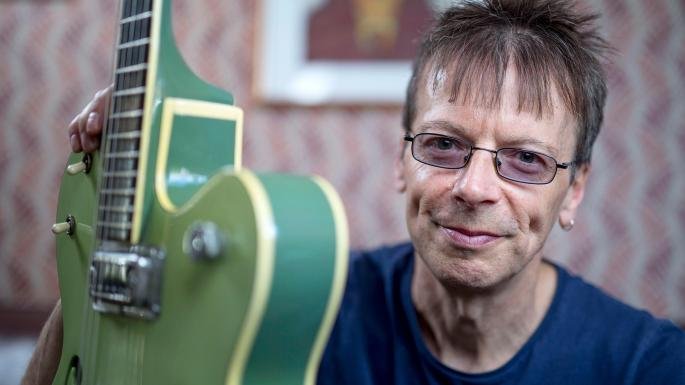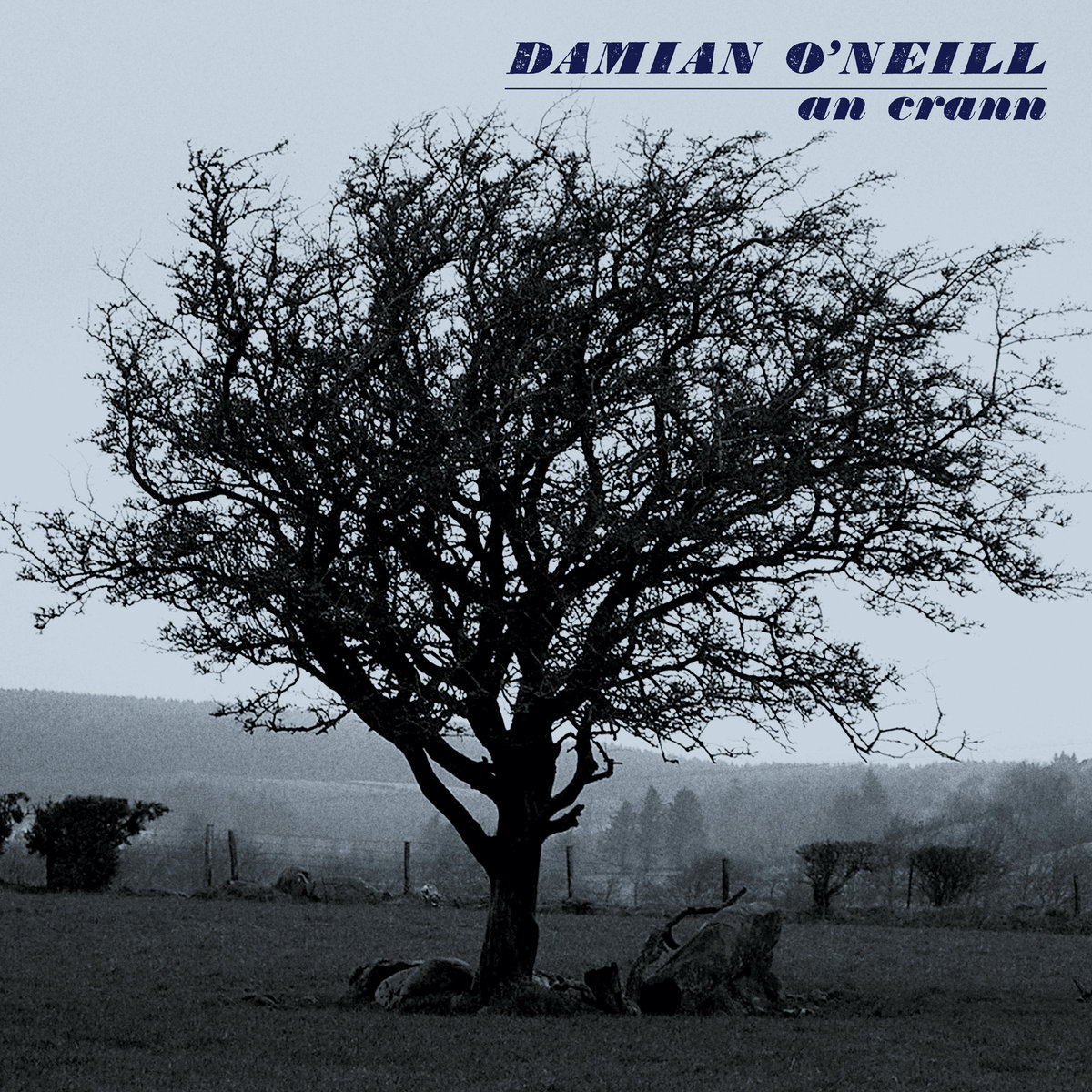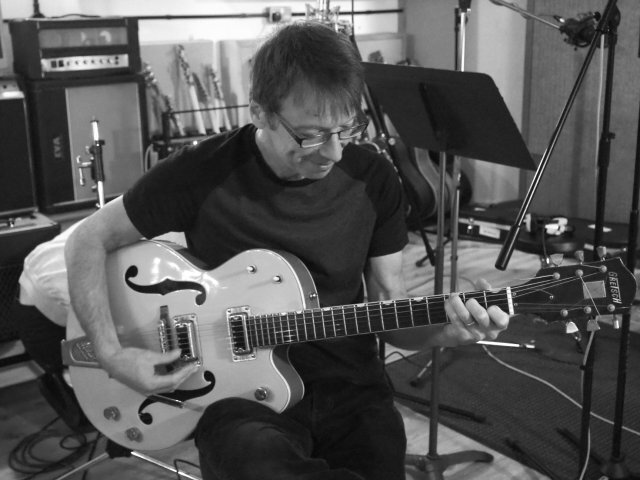
Damian O’Neill, the multi-talented musician known for his work with The Undertones and That Petrol Emotion, has released a beautifully crafted solo album, ‘An Crann’. He speaks to Jason Barnard about what inspired him, how his time in those groups has influenced his solo work and how his musical approach has evolved.
Can you tell us more about the inspiration behind ‘An Crann’?
I was so angry when Brexit happened. The consequences of what it could mean for the fragile peace process in Ireland were just ignored. With ‘An Crann’ I really felt I needed to express my Irishness more than I had ever done before, not with words but with feelings, in the tone and slightly melancholy mood of the music.
And over the last few years I’ve been listening to and absorbing so much different music from around the world I just wanted to make an instrumental record that would attempt to capture this – a kind of musical palette of different soundscapes and textures.
It is mostly instrumental. Was that a deliberate choice and what did you hope to achieve with this approach?
I released a solo album in 2018 called ‘Refit Revise Reprise’ where I revisited some songs I wrote from The Undertones/TPE days but also included new songs and instrumental pieces. The instrumental tracks were my favourite, so it just seemed natural to do a follow up LP that was purely instrumental. I also wanted this album to be more introspective and personal hence some of the Irish themes and titles.
Your album features a range of instruments from different cultures and influences. Can you discuss the musical styles and sounds that inspired you when making ‘An Crann’?
I guess there’s a whole hotch-potch of various musical influences like French band The Liminanas, Japanese composer Nobukazu Takemura , Hungarian jazz guitarist Gabor Szabo, American band Yo La Tengo, Hendrix of course and also Steve Reich. Then there’s Irish/British traditional folk artists like Lankum/ Planxty/ Bert Jansch. Also not forgetting film composers Bernard Hermann and Nino Rota. I’m also a bit of a collector of musical instruments, particularly percussion and tuned percussion like the kalimba and it was great to be able to incorporate them into the mix.
You recorded mostly at home. Can you talk about your creative process and how your environment influenced the sound and feel of the music?
A lot of it was written upstairs in our loft (a spare bedroom and music room) during lockdown. As we had no guests or distractions, I could leave all the instruments set up and undisturbed which was very convenient! I guess that being at home for such a long period of time contributed to the introspective quality of the music. Normally I’d just mess about on electric or acoustic guitar and hopefully get a good riff or chord sequence and build from there using Garageband on my laptop. I try not to use standard tuning these days because I find unconventional tuning can lead to more imaginative ideas.
The video for ‘Malin Head Imminent’ is visually stunning and complements the track perfectly. Can you tell us more about the concept behind the video?
On both the music and the video I wanted to invoke childhood memories of family holidays in Malin Head on the Donegal coast and try to capture the innocence of those days and the excitement that me and my 4 siblings felt back then.
Visually, all I had to do was provide animator Marry Waterson with various key words such as van/motion/sea/sand/ rain/fish/football/clouds from which she then created this beautiful video that really compliments the music.
The title ‘An Crann’ means “The Tree” in Irish. Can you share what this symbolises to you, and how it relates to the themes and ideas explored in the album?
I borrowed the title from Irish poet/writer Damian Gorman’s memoir ‘As If I Cared’. In it, I learnt that Damian formed a peace and reconciliation organisation based in Derry and Belfast in the early 90’s called ‘An Crann’ dealing with the conflict in the North of Ireland.
A tree is a symbol of growth and inspiration and I like to think that ‘An Crann’ also reflects my musical journey up to now, particularly the Irish themes contained within it.
I also love this quote from Nora Waln: “Trees give peace to the souls of men”.
My daughter Rosa took the photo of the Hawthorn tree which I used for the cover. It’s a sacred tree in Celtic mythology, also known as a Fairy tree.
You played virtually all the instruments on the album. Has the range of instruments you play developed over the years?
My main instrument is the guitar of course. But I also kept my Korg CX3 organ from The Undertones days. I was fortunate to acquire a second hand vibraphone in the ‘90’s and although I can hit only rudimentary notes on the metal keys, I simply love the shimmering effect it gives.
Added to that are melodica/ mandolin/ marimba/ mouth organ/ toy xylophone/squeezebox and various percussion instruments like the kalimba/bells/eggs/tambourines and so on that I’ve acquired over the years, as previously mentioned.
How has your musical taste and style evolved – how has that influenced your solo work?
I was very young when I first started out with the Undertones, and so my musical tastes were quite tribal and narrow. Gradually though as I’ve got older (and hopefully more open minded), I’ve realised there’s a big world of different music out there! I very much doubt my 16 yr old self would’ve appreciated diverse artists like Gill Evans, Mulatu Astatke, Dillard and Clarke, Basil Kirchin or Alice Coletrane to name just a few. I suppose you can say Old Punk Rocker meets his inner soul!
How do you approach songwriting and arrangement differently as a solo artist compared to when you were writing and arranging music with a band? Do you find it easier or more challenging to create music as a solo artist?
I’ve definitely grown in confidence musically as I’ve done more on my own, especially as an arranger. However, occasionally self doubt still creeps in- am I simply being self indulgent or does this really work? This is where fellow band members would keep you straight. Luckily, I did seek guiding help from Paul Tipler who expertly mixed the album at Unit 13 studios in London.
In what ways do you think your experiences playing with The Undertones and That Petrol Emotion have helped you to develop as a musician and shape your musical identity?
Both bands have left a deep and impacting legacy in different ways. The Undertones were the much bigger band of course but I think I developed more as a songwriter/arranger with the Petrols. I know that playing bass for TPE in the early years helped me appreciate what 4 strings rather than 6 can do and also I gained a much broader musical education that still holds true today.
What are your future plans?
Well, I’ll still be treading the boards with The Undertones throughout the year. My good friend Kevin Sharkey has remixed 7 or 8 tracks from my last 2 solo albums so hopefully that’ll see the light of day later in the year.
Finally, what would you say is the biggest lesson you’ve learned from your time in bands that has helped you in your solo work?
When an musical idea comes to you, get it down quick. However, if you’re still labouring over it days later, bin it and start again.
Further information
Damian O’Neill – Strange Brew Podcast episode
Photos from Damian’s website.






